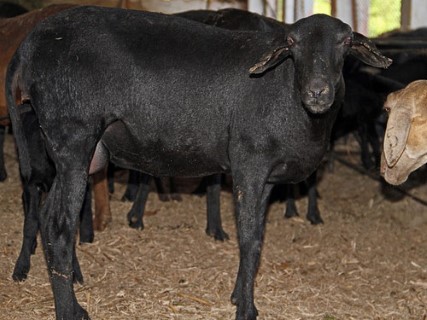The Santa Inês sheep, a distinctive breed hailing from the sun-kissed landscapes of Brazil, stands as a testament to the country's rich agricultural heritage. Evolving from a blend of Morada Nova, Bergamasca, and Crioula ancestry, these resilient creatures embody the culmination of centuries of selective breeding and adaptation to the diverse Brazilian terrain.
Draped in an array of colors ranging from striking reds and blacks to pristine whites, Santa Inês sheep captivate with their unique and diverse pelts, which can feature both spotted and solid patterns. Their large, muscular bodies and long-legged stature exude an air of strength and vitality, perfectly suited to thrive in the expansive pastures of Brazil.
One of the most distinctive features of Santa Inês sheep is their large, pendulous ears, which lend them an unmistakable appearance. These ears, coupled with their polled status and the absence of a throat ruff in rams, contribute to their distinctive silhouette and set them apart from other breeds.
Despite their impressive size and robust physique, Santa Inês sheep exhibit a low litter size, typically averaging around 1.25 offspring per birth. However, their adaptability and resilience allow them to flourish in a variety of environmental conditions, making them prized assets in Brazil's agricultural landscape.
In the field, mature ewes typically weigh between 40 and 50 kilograms (88 to 110 pounds), reflecting their efficient utilization of natural resources for sustenance and growth. In contrast, well-fed rams can reach impressive weights of up to 100 kilograms (220 pounds), underscoring their potential for robust development under favorable conditions.
